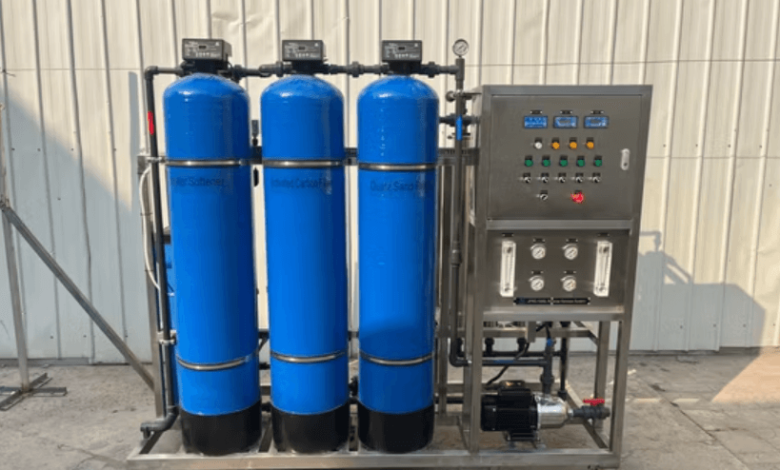Tela Para Filtrar Agua: A Simple Solution for Clean Water

In many regions, especially where advanced purification systems are unavailable or costly, people rely on simple yet effective methods to filter water. One of the most practical tools in these settings is the tela para filtrar agua, which translates to “cloth for filtering water.” Though it may appear modest, this method has significant benefits, and the technology behind it has evolved to serve both household and industrial needs.
This article explores the importance, types, uses, and innovations of tela para filtrar agua in modern water filtration systems.
What Is Tela Para Filtrar Agua?
Tela para filtrar agua is a specially designed textile used to separate solid impurities from water. This fabric may be natural, synthetic, or a blend of fibers, depending on the application. The basic principle is simple: the cloth acts as a barrier, allowing water to pass through while holding back particles like sand, sediment, organic matter, and even some pathogens.
In more technical applications, multilayer or chemically treated fabrics are used to enhance filtering efficiency.
The Need for Water Filtration
Diseases like cholera, typhoid, and dysentery are often waterborne and result from consuming untreated water. Even in urban areas, water may carry pollutants such as heavy metals, chemicals, or microplastics.
Tela para filtrar agua offers a simple, low-cost way to improve water quality, especially in emergency situations, disaster zones, rural settings, and developing countries. Its affordability, reusability, and ease of use make it a powerful first line of defense.
See also: Inside the World of a Stainless Steel Tumbler Manufacturer
Types of Water Filter Cloth
There are several variations of tela para filtrar agua, tailored to different water quality challenges.
1. Natural Fiber Cloth
Made from cotton, linen, or muslin, these fabrics are often used in basic gravity-based filtration. They are suitable for removing large particles such as leaves, mud, or algae but are less effective against microscopic pathogens.
2. Synthetic Woven Fabric
These are engineered fabrics like nylon or polyester mesh. They come with specific pore sizes, allowing users to target certain particle sizes. They are widely used in household and field water filtration kits.
How It Works
The principle of using cloth for water filtration is straightforward:
- Water passes through the cloth.
- Solid particles too large to fit through the fabric’s pores are retained.
- Filtered water collects on the other side, often into a container or storage vessel.
Depending on the cloth’s tightness (measured in microns), it can remove anything from coarse debris to bacteria and protozoa when combined with other filtration stages.
Applications of Tela Para Filtrar Agua
Household Use
In many homes, especially in remote areas tela para filtrar agua is used to pre-filter water before boiling or chemical treatment. A simple cloth tied over a jar or bucket can significantly reduce visible impurities and unpleasant taste.
Emergency Relief
Aid organizations distribute filter cloths in survival kits due to their compact size, low cost, and effectiveness.
Advantages of Using Filter Cloth
1. Cost-Efficient
Compared to ceramic filters, UV systems, or reverse osmosis, filter cloths are very affordable.
2. Portable and Lightweight
Tela para filtrar agua can be folded or rolled, making it ideal for hikers, campers, or travelers.
3. Reusable
This reduces waste and enhances long-term usability.
4. Easy to Use
No complex setup is required. Anyone, regardless of technical expertise, can use a filter cloth effectively.
Limitations to Consider
While tela para filtrar agua is helpful, it’s important to note its limitations:
- Not sufficient for complete purification: Cloth alone cannot remove viruses or chemical contaminants.
- Requires additional treatment: Boiling, UV light, or chemical disinfection may still be necessary after cloth filtration.
- Cleaning is essential: If not washed properly, cloth filters can become breeding grounds for bacteria.
Using tela para filtrar agua should therefore be part of a broader water safety strategy, not a standalone solution in high-risk environments.
Innovations in Water Filter Fabrics
Recent advancements in material science have improved the performance of tela para filtrar agua significantly.
Antimicrobial Fabrics
Some modern cloths come embedded with silver or copper nanoparticles, which kill or inhibit bacteria on contact. This reduces the need for frequent washing and improves water safety.
Biodegradable Filters
Researchers are exploring eco-friendly filter cloths made from banana peels, coconut fibers, or jute. These offer sustainable options for temporary or rural use.
Nanofiber Filters
These high-performance fabrics feature ultra-fine synthetic fibers that can trap even viruses. Though more expensive, they are used in medical or laboratory settings where water sterility is critical.
Caring for Your Filter Cloth
To maximize efficiency and lifespan, proper maintenance is key:
- Wash regularly: After each use, rinse the cloth with clean water and air dry in sunlight if possible.
- Avoid contamination: Keep dirty and clean sides of the cloth separate.
- Replace when needed: If the cloth becomes torn, clogged, or ineffective, it should be replaced immediately.
Simple practices like these ensure that your tela para filtrar agua continues to serve reliably.
Conclusion
Tela para filtrar agua is a timeless yet evolving tool that empowers individuals and communities to access cleaner water. Whether it’s a simple cotton cloth in a rural home or a high-tech nanofiber sheet in a lab, the principle remains the same — protect human health by removing unwanted particles from water.
As technology advances and global water challenges grow, this humble fabric will continue to be an important part of sustainable water solutions worldwide.





